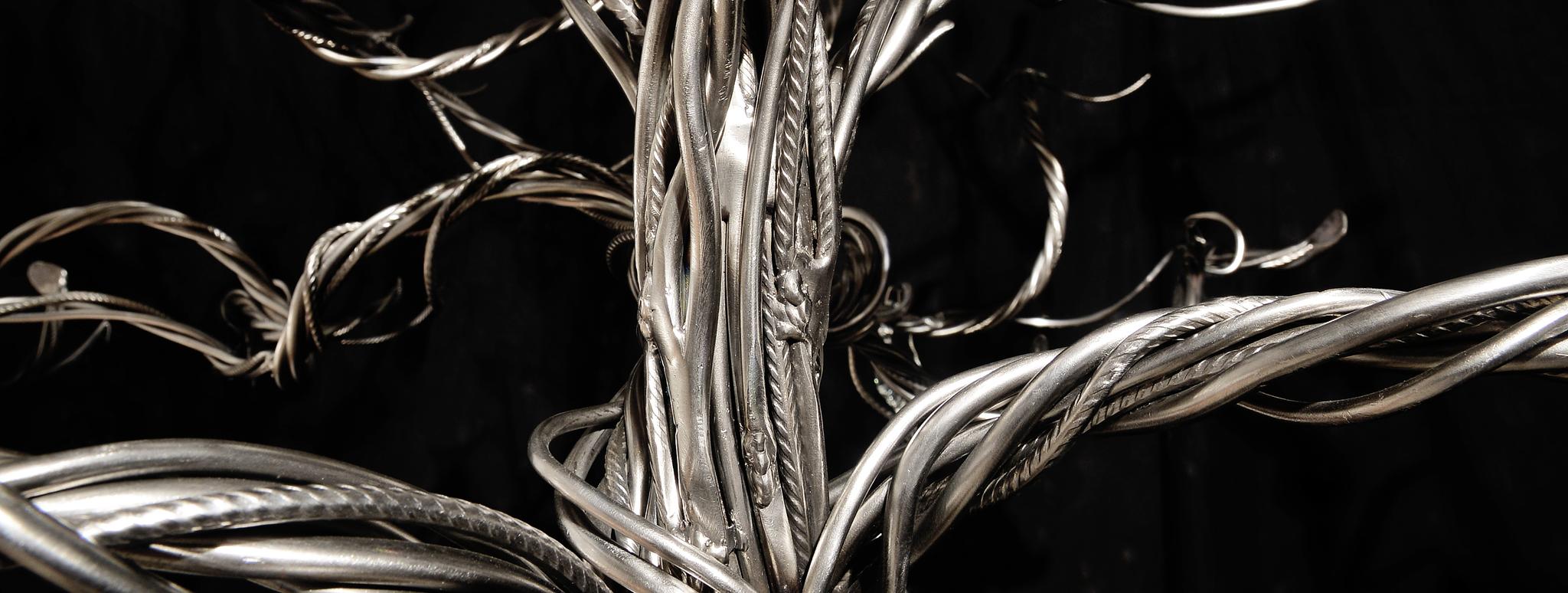
Ghidini 1961
Jack Fruit Bronze Vase By Campana Brothers
GBP 10,720
Ships in 7-8 weeks

Discover the historical background of Italian metalwork and fall in love with all the peculiar characteristics of different metals: copper, brass, steel, iron and bronze. Explore the wonderful finishes and textures that define these materials as a statement for elegance and charm.
Metal's complexity, combined with the various applications that metalworks can have, contributed to shaping a strong bond between Italian craftsmanship and this material. The fascinating combination of beauty and strength made different metals the perfect source for both everyday objects and decorative artworks.
Praised not only for its structural features but also for its elegant finishes and various textures, metals and the act of forging became a recognizable part of the country's cultural identity, and today Italian craftsmen still hold their activities with passion and motivation to keep exploring this wonderful material to the fullest.
The Italian peninsula was always rich in ore deposits, and its inhabitants learned how to master the art of metalwork. Among the several populations, the Etruscans are the ones that became renowned for their innovative techniques and beautiful creations.
The strongest reason behind their empire's prosperity and vastity was their ability in optimizing metalworking. They were able to not only transform it into one of the main income sources but also become widely renowned for the beauty of their creations. Till these days the inheritance of their expertness is still part of the Italian artistical and historical background.
The forge is a sacred place where metal is transformed, a magic cave where fire nourishes the desire of anything evasive, a place where man becomes demiurge and abstracts from the primordial and incandescent metal.
The first major distinction needed when talking about metalwork is between the two types of working techniques: heat shaping, when the metal is brought almost to its melting point before shaping it, and cold working, which happens at room temperature. Both techniques were improved by years of craftsmanship in Italy and became part of the artistic background of some regions in particular.
The northern italian region of Trentino Alto Adige has a rooted copper tradition. Following traditional craftsmanship techniques passed down generations, kitchenware and tableware collections are infused with nostalgic charm.
In Umbria, metalwork has a strong connection with the past Etruscan domination of the region. In fact, it was during their empire that metal craftsmanship flourished in the area and became more and more rooted in their inhabitants' backgrounds.
Exploring Emilia Romagna, it is impossible not to notice the manufactural production related to metalworking. This flourishing environment is the home of many artisans that master the art of metalworking.
In Lombardy, metalworks has also a deeply rooted artistic, historic, and social background.
Tuscany has a long tradition of working with bronze, and today this craft is part of the rich artistic heritage of the region.
Since the beginning of the Age of Bronze, the warm nuances of bronze have always fascinated humans. Its shiny finish and rich shades make bronze the perfect material for the production of rustic and evocative pieces.
Copper's red coloration is not its most distinctive feature. Since its first uses, this material was characterized by its malleability, which allows the artisans to fully expresse their creativity.
First mentioned by Homerus, this material has always been appreciated for its superior qualities, and for this reason, it was associated with Aphrodite, the goddess of love and beauty. Its similarity with the gold makes brass the perfect metal for creating wonderful and sophisticated artworks and pieces.
Steel is an alloy of iron and carbon with improved strength and fracture resistance. Its fascinating features doesn't only make it perfect for industrial purposes, but also place it in the center of the contemporary artistic panorama.
This is the most widely known metal and an important part of the Italian historical background since the Middle Age. The traditional "ferro battuto" is only one of the most renowned methods of ironworking. This fascinating technique takes place inside the Italian forges and consists in warming up one side of the iron piece that once out of the forge will be beaten on the anvil to obtain the desired shape.
Discover curated collections that feature all the beauty of metals with different finishes and textures and explore the variety of techniques that revolve around the Italian tradition of metalworking.